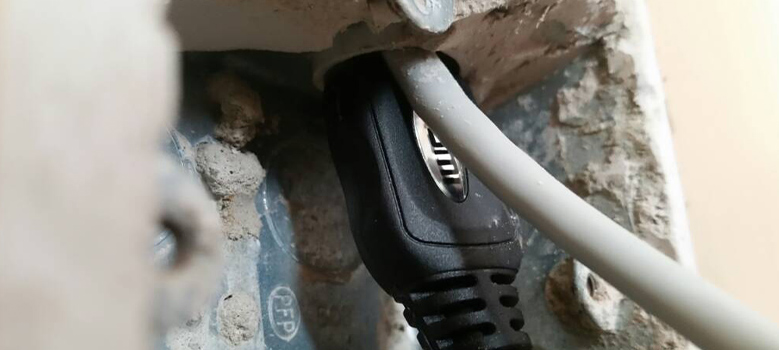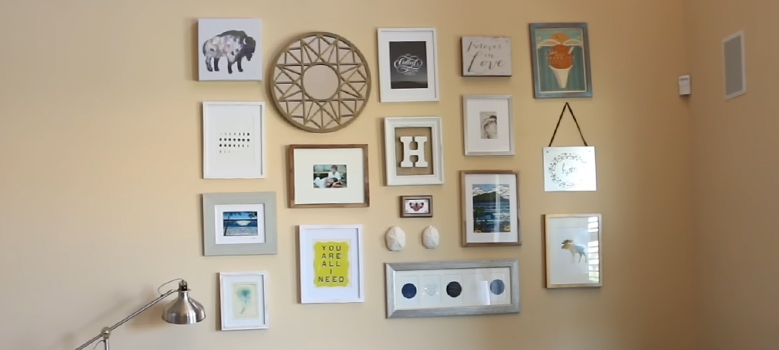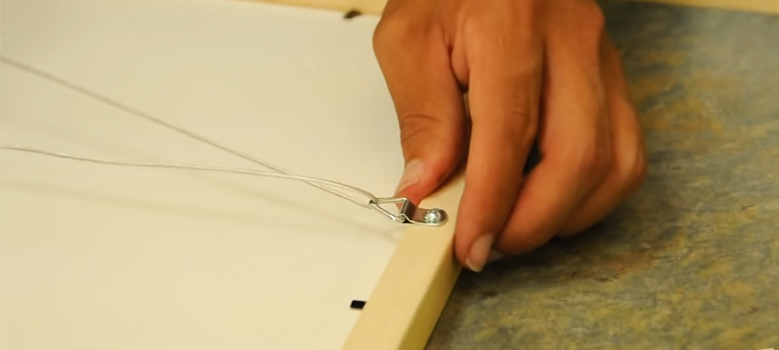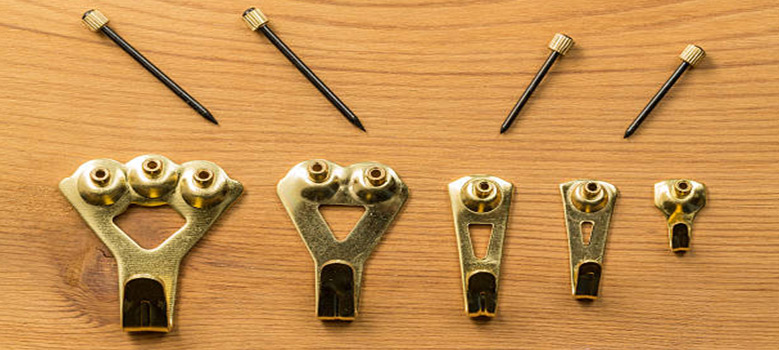Modern homes include a TV or A/V system as part of the comfort. HDMI cables in the wall are fundamental to a professional installation of an unseen system. For HDMI cable installation in the wall, there are two standard methods. A common solution is to hide the cables inside or on the wall. Hiding HDMI cabling in your home might seem trivial, especially if you have problems with your roof or plumbing. You don’t want cables hanging everywhere in your house because they are not only annoying but also dangerous for your children.
Also, A/V technology is improving rapidly, so you may often have to replace cables in your home. You can do all that yourself if you have little knowledge and a willingness to learn.
The Best Way to Fish HDMI Cable Through A Wall
Racing channels are usually shallow metal or plastic that mounts directly to the wall. An easy-to-install cover conceals the cables after they are inserted into the raceway channel. The elbows and tee fittings may also allow you to mount the wires the way you prefer.
According to industry experts, there are two leading solutions for hiding HDMI cables at home. To conceal your cabling with a raceway, attach it to the wall at the appropriate places.
Our interest is actually in the second solution. It involves installing HDMI cabling in or behind the wall. Most households choose this option for hiding wires because it is better and neater.
In addition, it involves a more significant amount of knowledge and preparation. Many sources of information are available today in the global era, so it’s easier to obtain knowledge quickly. If you don’t have your materials and tools, you can get them on the market if you don’t have them.
The Preparation Process
⦿ Your initial intentions and your plan for the job plan will heavily influence the extent of your preparations.
⦿When hiding cables throughout the house or replacing HDMI cabling in several rooms, you may need a technician’s help.
⦿ To perform this task, it is also necessary to have house plans, especially those for the wiring of the walls.
⦿When drilling, ensure you don’t cut off any power or A/C cables running through your walls. You should also find out where your walls’ studs are.
⦿ If you only have to hide the HDMI cable of your TV in the living room, you can start work quickly. Despite that, you shouldn’t disregard some preparations, such as locating the studs and power cables in the wall where you will install the cabling.
⦿ A cornerstone of your subsequent work is purchasing the necessary materials and having the right tools. It is always a good idea to have some extra materials on hand in case something unexpected happens.
| Materials and Tools |
| Materials | Tools-A | Tools-B |
| Wall Plates | Wire cutter/stripper | Sharpie Marker |
| Gang Wall Boxes | Stud finder | Electrical tape |
| HDMI Cables | Fish tape of fish sticks | Screwdrivers |
| Nail plates | Laser level or chalk line, | Step ladder |
| Wire ties and attachments | Electric drill, | Eye protection |
| Wire labels | Drywall Hand Saw | Work gloves |
| Wall Cable Management | A set of spade bits from ¼“ to 1-1/2“ | Dust masks |
Using Wire-Fishing Tools
⦿ Glow Rods: For wire fishing, glow rods are a must-have. You can push them up walls and along ceilings just like steel tape. They are usually in several lengths and can be screwed together for longer spans. Swivel eyelets and hook tips are standard. Luminescent rods illuminate dark joists and stud bays in the dark.
⦿ Flex Bit: A flex bit is the best tool for running a wire across joists and studs. Extensions allow drilling through several joists at once and come in long lengths. By pulling the wire back through with the same bit after making your holes, you can avoid having to make more holes.
⦿ Homemade Hooks: Making your fishing tools is one of my favorite fishing tips. You can grab the cable with a small hook made from cable or coat hangers. The best part is that they are inexpensive.
Important Instructions
⦿ Make a long, narrow hole in the baseboard by removing it. To pass your wire through the studs, drill holes in them. You can do this with both narrow and wide base trim. Make sure the holes in the studs are at least 1-1/4 inches wide. Avoid using metal plates to protect stud edges.
⦿ Make an angle cut if you need to open an access hole. After patching, press the cutout back into the hole and spread the joint compound around it. As a result of the mud, the plug will remain in place. Pins don’t need screws or backing and won’t fall out.
⦿ Taking the easiest route isn’t always the best choice. Run the wire from one house end to another using unfinished spaces such as basements and attics. The extra 50 feet of wire might take a little longer, but you’ll save much time.
⦿There are a few reasons you should push much more cable into walls or ceilings than you need. Firstly, it makes it easier to hook the line you’re fishing.
⦿ Plan the route your wire will take before cutting holes in walls. Locate any obstructions on the wall with a stud finder. The next might offer a better path depending on how much blocking there is in one stud bay. You don’t want to find out the hard way.
Installation Procedures
Step 1:
You can move on to the actual installation as soon as all of the preparations are complete. To construct your gang wall boxes, you must first mark the exact locations on the wall.
Step 2:
It’s usually best to place them by the baseboard and up at the bracket where the TV mounts. After you have marked the shape using your Drywall Hand Saw, cut rectangular holes. The holes must be as close to each other as possible for cables to run through them efficiently.
Step 3:
Next, you can fit your gang wall boxes into the holes. Depending on the box size, you might need to make some adjustments. Usually, running cables is the most challenging part of the process.
Step 4:
Your fish tape needs to be hung from the top hole to the bottom hole. Having an assistant will make it much easier to tape the cables to the fish wire and pull them up while you pull.
Step 5:
To avoid other obstacles in the wall: ➊Ensure the cable pack you pull up is compact and smooth. ➋With the screwdriver, tighten the screws on the gang boxes once you have run the HDMI cable through the wall—➌Pass the wires through the wall plates. ➍You can also use a customized faceplate or a Wall Cable Management Kit. To finish, tighten the screws on the wall plates.
How Do You Fish Cable Wires Through a Wall?
Making connections inside switches, lights, and outlet boxes is one of the basic skills of DIY electrical. In addition to adding new lights, outlets, and controls, you can add a communication cable such as Cat 6 by “fishing” wire through your walls. Wires don’t have to dangle across your borders if you don’t want to step over extension cords. With these wire-fishing tips and tools, you can place wires where you need them.
⦿ Don’t Fish Power Cords: You cannot put power cords for appliances, TVs, or power strips inside walls. According to the National Electrical Code, this type of cord cannot replace permanent wiring. You can fish cable to add a new outlet nearby to avoid seeing these power cords.
⦿ Don’t Run Cable in Ductwork: It is illegal to run a line inside ductwork, regardless of how convenient it may seem. It is possible to run cable in plenum spaces for return air, but you will need plenum-rated cable. The cable jackets on these cables are nontoxic and fire-rated. Electrical supply stores carry plenum-rated Cat 6 and security cables. As compared to standard versions, it will cost twice as much.
⦿ Give Communication Cable Enough Space: Lines carrying high voltage, such as coax or Cat 6, should be kept from communication cables. It is recommended that you keep them 12 to 16 inches apart. When crossing these cables, ensure you do so at a 90-degree angle.
⦿ Run Conduit in Closets or Cabinets: Using conduit or armored cable as surface wiring is another excellent option, and it’s considerably less expensive than raceways. Unlike raceway, it won’t appear in a closet or along the backs of cabinets, but you wouldn’t want to use it over your walls.
⦿ Drill Two Holes to Turn a Corner: Cutting holes on each side of the corner is the key to running wire around corners. You can drill a hole in each corner stud with an angle drill attachment or a spade bit. You can then pull the wire through this path.
⦿ Route Cable Behind Baseboard: Replace the baseboard by cutting a long, narrow hole. To pass your wire through the studs, drill holes in them. Narrow base trim works well, but wide base trim is recommended. Ensure that the holes in the studs are at least 1-1/4 inches in diameter. A protective metal plate is not necessary when the metal is kept from the stud edges.
⦿ Hook on to a Flex Bit: When fishing with wire, glow rods aren’t always necessary. Fishing wire works well with most flex bits because they have holes at the ends. Attach your wire directly to the flex bit and fish it through there if you have access to it. Tape the wire up to keep it from coming off when you pull it back through. To avoid accidentally spinning the bit and twisting your wire, remove your bit from your drill before pulling.
⦿ Hide Wires With a Wiring Kit: Using an in-wall wiring kit is the simplest way to hide wires. Plug in the extension cord once the wire is run down the wall. Cut holes for the boxes and run the wire down the wall. There is an extension cord included with the equipment, both of which are prewired with male-ended plugs. The technique is handy if a stud blocks a direct fishing route and you want to avoid a costly wall repair.
⦿ Hide Wires With Raceway: Using raceways on the wall surface is a great way to get power right where you need it without drilling holes in the walls. You can paint the raceway to match the wall and hide it behind furniture. Using snap-together components, construct the raceway from an existing electrical box and hide the wire.
Frequently Asked Questions
How Do I Fish A HDMI Cable Behind The Wall?
To fish an HDMI cable, unhook one of your wall cables and tape a string to its end. You will pull the line in when you pull it out. Pull both the HDMI wire and the existing one back through the two horizontal studs by taping them to the string. Then you adjust them to your main cable pack.
How Do I Know If An HDMI Cable Is Wall Rated?
When buying one, it is essential to look for codes that verify the HDMI cable’s standard. There is a mandatory alphanumeric code on the outer insulation of all rated lines. In-wall video and data cables have a rate code of CL2 or CL3. There are different rate codes for other cabling specifications.
In a Brick Wall, How Do I Hide an HDMI Cable?
Putting the cabling behind one brick requires removing and replacing one brick. Next, remove enough mortar to adjust your HDMI cables. After that, you will need to conceal the wires, for example, by using artillery facing. You can use faux brick wallpaper or other decorative covers for a more aesthetic look.
Conclusion
We are responsible for making your homes comfortable and cozy for our children and ourselves. An essential improvement we can make is hiding the cabling behind the walls. It is always possible to face hardships, even in the most specific circumstances. The good news is that anyone can handle it with a bit of patience, perseverance, and guidance. Finally, anyone lacking these qualities can always seek professional assistance.






